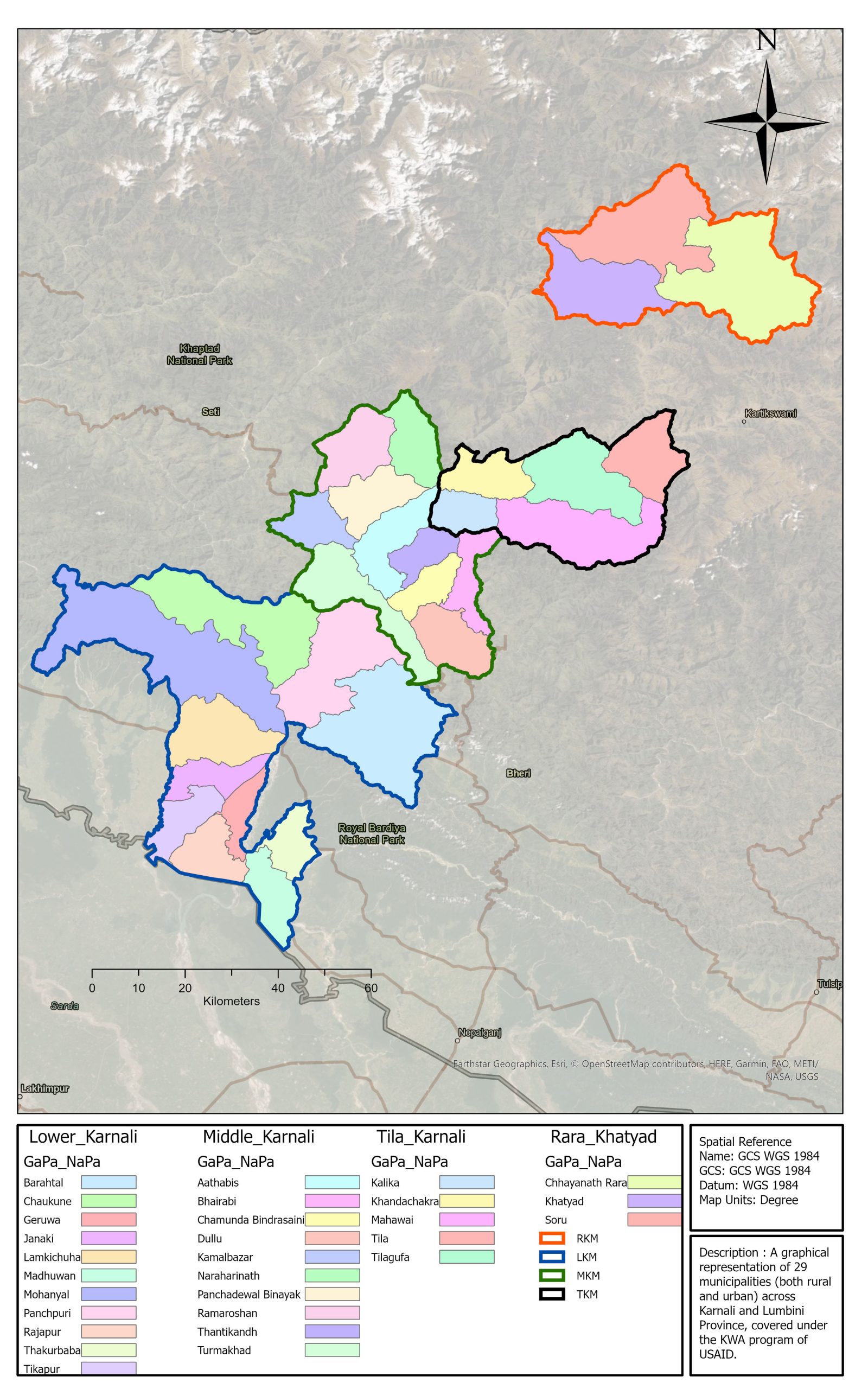Media Release_Spring source assessment in Karnali River Basin
Posted June 10, 2022
Spring sources assessment in four watersheds of Karnali Basin
Springs are the primary water sources for drinking, irrigation, and other uses in the Mid-Hills of Nepal. The condition of these springs, however, is deteriorating in terms of quality and quantity. Climate change, earthquakes, and anthropogenic disturbances contribute to drying up, decrease in water volume, and degradation in water quality of the springs. For example: a huge number of springs in Nepal were reported to have dried up after 2015 Gorkha Earthquake. The degradation of springs ultimately affects drinking, irrigation, other domestic uses, and the livelihood of local people. Managing spring sources requires understanding the condition of such springs.
A consortium of Iset Nepal Services Pvt Ltd, Aquatic Ecology Centre (AEC), Kathmandu University (KU) and Hydro lab with two locally-based organizations Karnali Integrated Rural Development and Research Center (KIRDARC) Nepal and Rural Development Centre (RuDeC) Nepal, implemented the spring assessment project with the financial support of the ‘USAID Karnali Water Activity’. The project area covers four watersheds of Karnali Basin: Rara Khatyad, Tila Karnali, Middle Karnali, and Lower Karnali. The activity is being carried out in the 29 municipalities/rural municipalities of Mugu, Kalikot, Jumla, Achham, Dailekh, Bardiya, Kailali and Surkhet districts of these four watersheds.

Project area: 29 Muncipalities/Rural municipalities in the watersheds: Rara Khatyad, Tila Karnali, Middle Karnali, and Lower Karnali of Karnali Basin
Many of those districts fall in the remote and difficult terrain, due to which identifying springs is arduous. Due to this, local people were consulted in community and municipality level Focus Group Discussions and the existing number of springs in communities and municipalities were documented. To collect water samples, local enumerators were hired. The field coordinators assigned by the KIRDARC and RuDeC received the Training of Trainers on data collection methods, documentation of field consultations, and data entry through mobile phones from the consortium experts. They then provided the training on sampling and data entry to the local enumerators in each site.

Photograph 1: Field demonstration of discharge measurement (by bucket method) during enumerators training
The enumerators were provided with measuring tape, stopwatch and mugs to spring discharge, thermometer to measure temperature, litmus paper to note the pH of the spring water, and High-Density Polyethylene to collect water samples. Temperature and pH being time sensitive, were measured on-site. Measurement of all the parameters requires digital instruments and laboratory equipment in the each site, which is impossible given the rugged topography of most of the project area. Therefore, minilabs were set up in different locations at each municipality/rural municipality where the enumerators submitted the samples collected each day. Some water quality parameters must be determined in the laboratory within a few hours of water sample collection. So, the water samples from the field were deposited in the minilabs where in addition to measuring temperature and pH, water quality parameters: dissolved oxygen, turbidity, conductivity, total dissolved solids, total hardness, calcium hardness, nitrate, phosphate, ammonia and E.coli were measured by the lab technicians of AEC, KU. Water samples were sent to the laboratory of AEC for heavy metals analysis using Atomic Absorption Spectroscopy.

Photograph 2: Lab technician of Aquatic Ecology Centre, Kathmandu University measuring water quality parameters at minilab
The assessment will prepare an inventory of all the spring sources with their GPS locations and water quality status. The inventory is expected help in planning, monitoring and management of spring water sources for various uses. In particular, this project would support the Local Government’s Water, sanitation and hygiene (WASH) plans and Water Use Management Plan (WUMP) development tasks. In addition, this will also contribute to the database of the Ministry of Water Supply’s NWASH MI&E.
Earlier studies conducted on spring water sources in Nepal have only documented water quantity and quality of springs of different parts of the country. They have used methods like desk-based study and remote sensing. This study is, however, unique as it is carrying out a Census of all spring sources of four water sheds of the Karnali Basin covering a large area of 6,227 square kilometers. The study would produce an inventory of springs and water resources of four watersheds of Karnali Basin, which have not been subjected to extensive research at this level. The study becomes more significant with the increasing impacts of climate change and other stressors to the spring sources of Nepal.
At the same time, the study is the first of its kind in Nepal, in which well-equipped laboratories are set up at several locations of each watersheds so that physicochemical and microbiological parameters can be assessed within the timeframe prescribed by standard protocols.